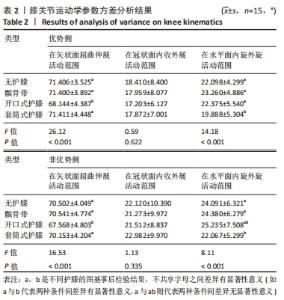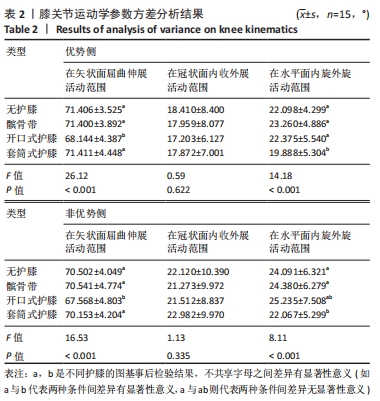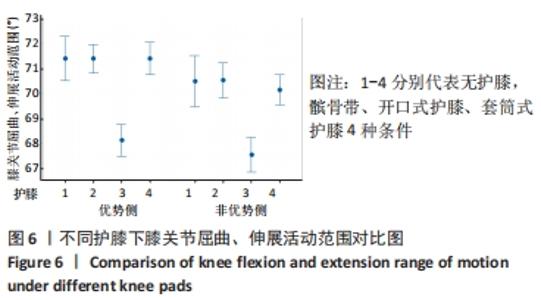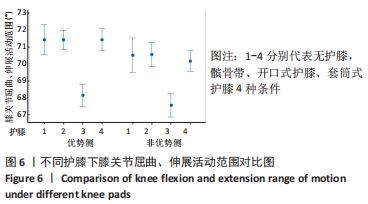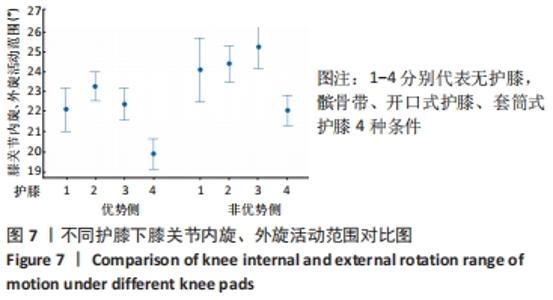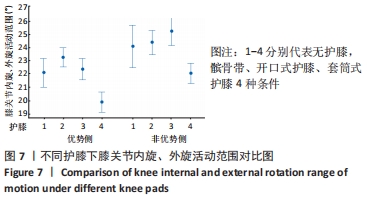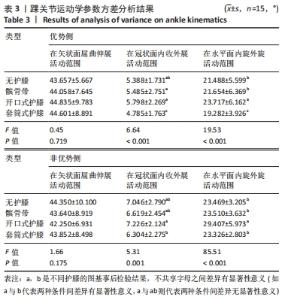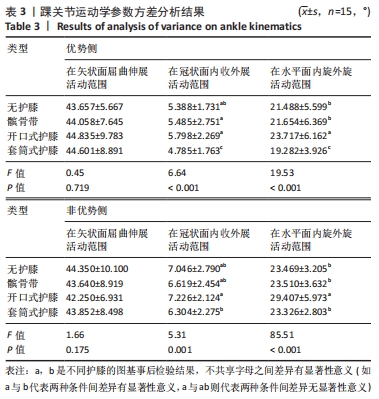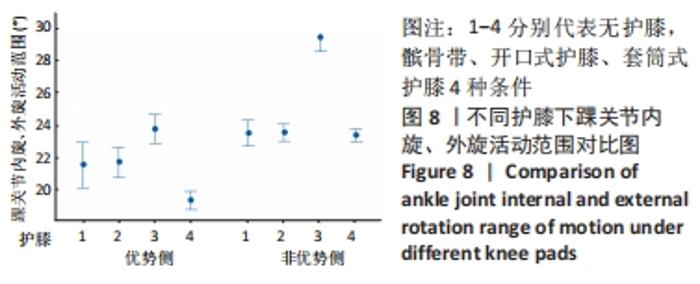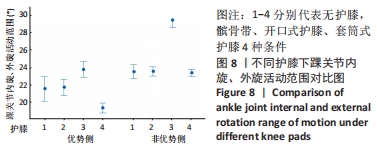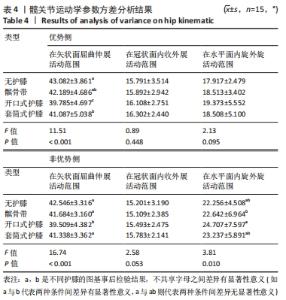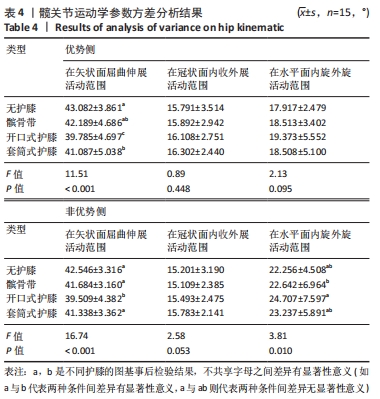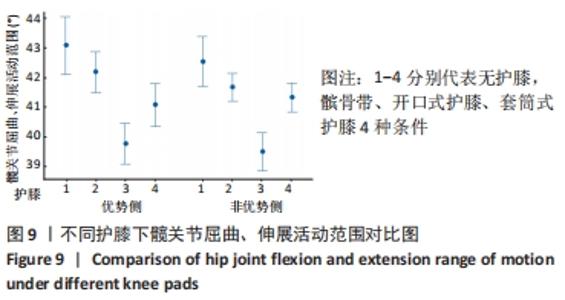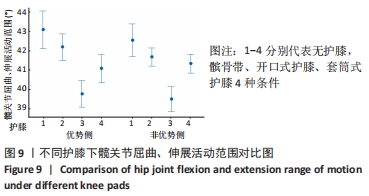[1] 韩天然. 长跑爱好者下肢结构及功能特征与下肢损伤的关系研究[D]. 北京: 北京体育大学,2017.
[2] 杨一卓. 业余跑者跑步损伤危险因素调查及长距离跑后足弓疲劳与纠正效果[D]. 北京: 北京体育大学,2018.
[3] 刘永祥. 中老年人跑步时膝关节的保护与锻炼[J]. 家庭医学,2001, 31(8):40.
[4] 徐小敏. 江苏省高校高水平篮球运动员膝关节损伤现状及对策研究[D]. 苏州: 苏州大学,2010:1-47.
[5] 阎玉秀, 高智英, 金子敏, 等. 跑步运动中护膝压迫对女子膝关节角度影响[J]. 丝绸,2018,55(8):47-51.
[6] 张峻霞, 张子倩, 邵洋洋, 等. 基于运动生物力学的护膝设计评价[J]. 包装工程,2020,438(24):12-18.
[7] HANZLÍKOVÁ I, RICHARDS J, HÉBERT-LOSIER K, et al. The effect of proprioceptive knee bracing on knee stability after anterior cruciate ligament reconstruction. Gait Posture. 2019;67:242-247.
[8] SIEBERS HL, ESCHWEILER J, PINZ J, et al. The effect of a knee brace in dynamic motion-An instrumented gait analysis. PLoS One. 2020;15(9): e0238722.
[9] BRELOFF SP, SINSEL EW, DUTTA A, et al. Are Knee Savers and Knee Pads a Viable Intervention to Reduce Lower Extremity Musculoskeletal Disorder Risk in Residential Roofers? Int J Ind Ergon. 2019;74:102-108.
[10] HART HF, HOLT M, SEMCIW AI, et al. Influence of an unloader brace on lower limb electromyographic activity in individuals with predominant lateral osteoarthritis after anterior cruciate ligament reconstruction. Braz J Phys Ther. 2020;24(4):342-348.
[11] 刘青青, 阎玉秀. 基于三维运动捕捉的篮球护膝防护性能研究[J]. 现代纺织技术,2019,27(2):53-58.
[12] FOCKE A, STEINGREBE H, MÖHLER F, et al. Effect of Different Knee Braces in ACL-Deficient Patients. Front Bioeng Biotechnol. 2020;26(8): 964.
[13] SADEGHI H, ALLARD P, PRINCE F, et al. Symmetry and limb dominance in able-bodied gait: a review. Gait Posture. 2000;12(1):34-45.
[14] 叶家驰, 程瑞. 高水平羽毛球运动员单腿力量与爆发力特征的研究[J]. 中国学校体育(高等教育),2018,5(11):64-68.
[15] 王聪, 王磊, 马森. 羽毛球运动员髋关节伸肌及外展肌肌力特征研究[J]. 文体用品与科技,2019,9(7):219-220.
[16] 霍春悦. 对不同速度迈步过程中优势腿与非优势腿差异性的研究[D]. 天津: 天津体育学院,2019.
[17] 李国一, 杨文波. 羽毛球运动对青少年优势侧与非优势侧身体形态差异的影响及变化规律研究[J]. 中国学校体育(高等教育),2016, 3(2):79-85+92.
[18] ICHIHASHI N, IKEZOE T, SATO S, et al. Gait asymmetry assessment for older adults by measuring circular gait speed. Geriatr Gerontol Int. 2019;19(8):736-739.
[19] STEFANYSHYN DJ, ENGSBERG JR. Right to left differences in the ankle joint complex range of motion. Med Sci Sports Exerc. 1994;26(5): 551-555.
[20] 张英媛, 陆阿明. 优势侧和非优势侧踝关节在连续纵跳下落阶段中的表现[J]. 体育科学,2013,33(5):68-73.
[21] 毛晓锟, 张秋霞, 王国栋, 等. 优势侧和非优势侧跑步支撑期的生物力学偏侧性研究[J]. 首都体育学院学报,2017,29(1):91-96.
[22] 赵享楠. 跑鞋屈曲刚度对足底筋膜炎跑者跑步生物力学特征和主观评价的影响[D]. 北京:北京体育大学,2018.
[23] 张峻霞. 步态分析与行走稳定性研究[M]. 武汉: 华中科技大学出版社,2020:212.
[24] HIRASAWA Y. An Observation on Standing Ability of Japanese Males and Females. J Anthrop Soc Nippon. 1979;87(2):81-92.
[25] NIU W, WANG Y, HE Y, et al. Kinematics,kinetics,and electromyogram of ankle during drop landing: A comparison between dominant and non-dominant limb. Hum Mov Sci. 2011;30(3):614-623.
[26] 高雅, 戴剑松. 跑步的下肢关节运动学特征研究综述[J]. 四川体育科学,2020,39(3):57-60.
[27] 王喆豪. 跨越水平方向障碍的步态及应用研究[D]. 天津: 天津科技大学,2018.
[28] 朱忠林. 膝关节三维运动测量方法与应用研究[D]. 北京: 清华大学, 2012.
[29] 高智英. 跑步运动中护膝紧度对女子膝关节防护效果的影响[D]. 杭州: 浙江理工大学,2017.
[30] 彭凯. 踝关节运动损伤的成因及快速康复研究[J]. 影像研究与医学应用,2018,2(1):183-184.
[31] HART S, GABBARD C. Examining the mobilizing feature of footedness. Percept Mot Skills. 1998;86(3 Pt 2):1339-1342.
[32] PETERS M. Footedness: asymmetries in foot preference and skill and neuropsychological assessment of foot movement. Psychol Bull. 1988;103(2):179-192.
[33] 杨芳. 老年人负重跨障行走步态特征研究及应用[D]. 天津: 天津科技大学,2019.
[34] 马绍兴, 王人成, 沈强. 步态模式对人体髋膝踝关节运动协调关系的影响[J]. 中国康复医学杂志,2015,30(12):1257-1261.
|


